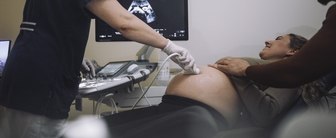A new YouGov survey on vaccines finds that two-thirds of Americans believe a widespread outbreak of a new infectious disease in the U.S. is likely in the next 10 years. Most also consider it likely that the U.S. will experience a widespread resurgence of an existing disease that children are currently regularly vaccinated against.
70% of Americans say it’s somewhat or very likely that the U.S. will experience a widespread outbreak of a new infectious disease in the next 10 years, including 35% who consider it is very likely. Democrats are about twice as likely as Republicans to think this is very likely (49% vs. 25%).
A majority of Americans (58%) think it’s very or somewhat likely that the U.S. will experience a widespread resurgence of an existing disease that children are currently regularly vaccinated against. 74% of Democrats and 46% of Republicans say this is likely; 38% of Democrats and 14% of Republicans say it is very likely.
Should there be a new infectious-disease pandemic in the U.S., 45% of Americans think that vaccine development should be the government’s top priority for fighting the disease. 33% think it should be one of several government priorities for fighting the disease, and just 8% say it should not be a government priority for fighting the disease. Democrats are about twice as likely as Republicans to say vaccine development should be the government’s top priority for fighting a new infectious-disease pandemic (68% vs. 32%).
Around one-third (32%) of Americans believe infectious diseases such as measles are more of a threat to the U.S. than they were 50 years ago. 38% believe they are less of a threat now than they were in 1975. Republicans are more likely than Democrats to say infectious diseases are less of a threat now (47% vs. 30%).
About three-quarters (73%) of Americans think infectious diseases such as measles are a somewhat or very serious problem for the United States, including 38% who say these diseases are a very serious problem. Democrats are more likely than Republicans to say infectious diseases are a serious problem for the U.S. (90% vs. 65%).
Majorities of Americans either have had or know someone who has had COVID-19 (83%), chickenpox (74%), and influenza (73%); about half (53%) know anyone (including themselves) who has had measles, mumps or rubella (53%). Fewer either had or know someone who has had hepatitis B (16%) or polio (15%).
Americans 45 and older are more likely than younger adults to know anyone who has had chickenpox (84% vs. 61%), measles, mumps, or rubella (58% vs. 15%), or shingles (68% vs. 35%).
Majorities of Americans say they have been vaccinated against COVID-19 (73%), measles, mumps and rubella (MMR) (69%), Diphtheria, tetanus, pertussis (DTaP) (66%), influenza (63%), and polio (58%). Less than half say they have ever received vaccines for each of the following: chickenpox (46%), hepatitis B (40%), hepatitis A (32%), shingles (31%), or Human papillomavirus (HPV) (22%). For many of these vaccines, more than 10% of Americans are unsure if they have had them, and that group as well as some who say they haven't gotten each vaccine may not recall early-childhood jabs. Centers for Disease Control and Prevention estimates of vaccination rates are higher than the equivalent self-reported figures from our survey.
Americans 45 and older are more likely than younger adults to say they have been vaccinated against polio (69% vs. 45%) and shingles (41% vs. 19%).
Democrats are more likely than Republicans to say they’ve been vaccinated for COVID-19 (89% vs. 64%), polio (67% vs. 53%), influenza (75% vs. 60%), HPV (31% vs. 17%), and hepatitis B (50% vs. 36%).
The vaccines for polio, hepatitis B, DTaP, MMR, hepatitis A, influenza, COVID-19, chickenpox, and HPV all are part of the recommended immunizations for children in the U.S.
About half (51%) of Americans say they normally keep up to date with their vaccines. 36% say they’ve delayed or skipped some vaccines and 13% say they do not get any vaccines. Democrats are more likely than Republicans to say they normally keep up to date on vaccines (71% vs. 42%).
The most common reasons for not keeping up with vaccines — from a list of 17 options on the survey — are distrusting pharmaceutical companies (15% of all Americans both delay or skip some vaccines and cite this as a reason), distrusting the government (14%), or forgetting or not knowing that they needed a vaccine (12%). (Respondents could select any that apply.) Republicans are more likely than Democrats to both skip, delay, or decide not to get certain vaccines and to cite as reasons not trusting pharmaceutical companies (25% vs. 2%) and not trusting the government (23% vs. 2%).
60% of Americans say they have never had a negative reaction to receiving a vaccine. 26% have had a minor negative reaction, and 6% have had a major negative reaction.
If different vaccine delivery systems were available, 54% say they’d generally prefer to receive a vaccine as an injection, while 22% would prefer if vaccines could be administered as a pill. Few (4%) would prefer a nasal spray.
Related:
- What Americans think of childhood vaccinations
- Fewer than half of Republicans now support requiring childhood vaccinations for infectious diseases
- Most Americans are locked into their views on vaccine mandates, no matter who’s affected or how
See the results for this YouGov survey
— Carl Bialik and Taylor Orth contributed to this article
Methodology: This article includes results from an online survey conducted April 1 - 4, 2025 among 1,067 U.S. adult citizens. Respondents were selected from YouGov’s opt-in panel to be representative of adult U.S. citizens. The sample was weighted according to gender, age, race, education, 2024 presidential vote, 2020 election turnout and presidential vote, baseline party identification, and current voter registration status. 2024 presidential vote, at time of weighting, was estimated to be 48% Harris and 50% Trump. Demographic weighting targets come from the 2019 American Community Survey. Baseline party identification is the respondent’s most recent answer given around November 8, 2024, and is weighted to the estimated distribution at that time (31% Democratic, 32% Republican). The margin of error for the overall sample is approximately 4%.
Image: Getty













